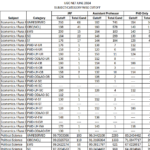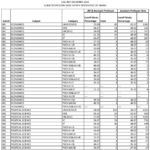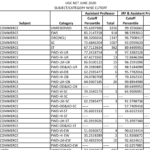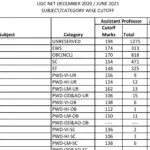Learning Inside:
If you don’t want to read the Whole Post on Accounting Principles So you Can Listen to the Recording followed below.
- Meaning and Natural of Accounting Principles #
- Feature of Accounting Principles #
- Necessity of Accounting Principles #
- Fundamental Accounting Assumptions #
Accounting Principles or Concepts #
- Accounting Entity #
- Money Measurement #
- Accounting Period #
- Full Disclosure #
- Materiality #
- Prudence or Conservatism #
- Cost #
- Matching #
- Dual Aspect #
- Revenue Recognition (Realisation) #
- Verifiable Objective #
Let’s get Start In comprehensive.
Accounting principles, concept and conventions commonly known as Generally Accepted Accounting Principles or GAAPs are the basic rules that define the parameters and constraints within which accounting operates.
These principles are the theory base of accounting, on the basis of which financial statements are prepared. In other words, they are the guidelines for preparing the financial statements.
The Institute of Chartered Accountants of India (ICAI) has issued Accounting Standards to standardise the accounting practices adopted to produce Financial Statements.
The Companies Act, 1956 has made them mandatory for the management and also for the auditors.
Meaning and Nature of Accounting Principle
“Principles of Accounting are the general law or rule adopted or proposed as a guide to action, a settled ground or basis of conduct or practice.” – The American Institute of Certified Public Accountants
Accounting Principle are the rules of action or conduct adopted by accountants universally while recording accounting transactions. They are the norms or rules which are followed in treating various items of assets, liabilities, expenses, incomes, etc.
For example, Inventory (stock) should be valued at lower of its cost or net realisable value. Fixed assets should be depreciated over their useful life. Principles are the basic or fundamental propositions and are generally accepted set of Accounting Principle based on which transactions are recorded and Financial Statement are prepared.
These principles are classified into two categories:
Accounting Concepts;
Accounting Conventions.
Accounting Concepts:
Accounting Concepts are the basic assumptions or fundamental propositions within which accounting operates.
They are generally accepted accounting rules based on which transactions are recorded and financial statements are prepared.
It is important to follow the accounting concepts because it will enable the users of financial statements to understand them better and in the same manner.
Accounting Conventions:
Accounting Convention are the outcome of accounting practices or principles being followed by the enterprises over a period of time.
Conventions may undergo a change with time to bring about improvement in the quality of accounting information.
FEATURES OF ACCOUNTING PRINCIPLES
Accounting Principles are Man-Made:
Accounting Principles are man-made and, therefore, do not stand scrutiny like the principles of natural science.
They are the best possible suggestions based on practical experiences. They are recommended for use by all enterprises to ensure uniformity and understandability.
Accounting Principles are Flexible:
Accounting Principles are not rigid but flexible.
Whenever a situation arises that requires solution, accountants arrive at a reasonable decision which gradually becomes the accepted Accounting Principle.
It must be borne in mind that accounting principles are not permanent and change with time.
Accounting Principles are Generally Accepted:
Accounting Principles are the bases and guide for accounting and are generally accepted.
The general acceptance of Accounting Principle usually depends on how it meets the criteria of relevance, objectivity and feasibility.
Relevance: Accounting Principles are relevant if they result in information that us useful to the users of accounting information.
Objective: Accounting principles are objective if they are not influenced by the personal bias of the persons preparing the accounting information.
Feasible: Accounting Principles are feasible if they can be applied without undue complexity and cost.
NECESSITY OF ACCOUNTING PRINCIPLES
Accounting information is better understood if it is prepared following the set of accounting principles uniformly.
It means the same Accounting Principles are followed by all entities in preparing their final accounts.
Accounting information is meaningful and useful for users of accounting information if the accounting records and financial statement are prepared following generally accepted accounting information in standard forms which are understood.
FUNDAMENTAL ACCOUNTING ASSUMPTIONS OR CONCEPTS
Fundamental Accounting Assumptions or Concepts are the assumptions which are presumed to have been followed in preparing the annual accounts.
The entities which do not follow any of the fundamental accounting assumptions should disclose which of these assumptions have not been followed and the reasons for not following them.
The Fundamental Accounting Assumptions are:
1. Going Concern Assumption;
2. Consistency Assumption;
3.Accrual Assumption;
Let us discuss them in detail:
Going Concern Assumption:
According to the Going Concern Concept it is assumed that business shall continue for a foreseeable period and there is no intention to close the business or scale down its operations significantly.
It is because of this concept that a distinction is made between a capital expenditure, i.e., expenditure that will render benefit for a long period and revenue expenditure, i.e., one whose benefit will be exhausted quickly, say, within the year.
On the basis of this concept, fixed assets are recorded at their original cost and depreciated in a systematic manner without reference to their market value.
For example, a machine purchased is expected to last 10 years. The cost of the machinery is spread on a suitable basis over the next 10 years for ascertaining the profit or loss for each year.
The total cost of the machine is not treated as an expense in the year of purchase itself.
Consistency Assumption:
According to the Consistency Assumption, accounting practices once selected and adopted, should be applied consistently year after year.
The concept helps in better understanding of accounting information and makes it comparable (a qualitative characteristic of accounting information) with that of previous year.
Consistency eliminates personal bias and helps in achieving results that are comparable.
The concept is particularly important when alternative accounting practices are equally acceptable.
For example, two methods of charging depreciation, Written Down Value Method and Straight-Line Method, are equally acceptable. Under the convention method once chosen and applied should be applied consistently year after year.
But, it does not mean that practice once adopted cannot be changed.
The accounting practice may be changed if the law or Accounting Standard requires it or the change will result in more meaningful presentation.
If an enterprise desire to adopt an alternative practice, it must disclose the change and its impact on the profit or loss.
The rational of the Consistency convention can be better understood with the following example:
A company purchases a fixed asset for ₹ 10,00,000 and charges depreciation @20% on the Straight Method. At the end of the Year 2, the book value of the asset will be:
Cost of the Fixed Asset Less: Depreciation @20% for Year 1 (20% of ₹ 10,00,000) | ₹ 10,00,000 -2,00,000 |
Less: Depreciation @20% for Year 2 (20% of ₹ 10,00,000) | 8000000 -2,00,000 |
| = 6,00,000 |
Now, if the method is changed to the Written Down Value Method in the second year, the book value of the asset at the end of Year 2 will be:
Cost of the Fixed Asset Less: Depreciation @20% for Year 1 (20% of ₹ 10,00,000) | ₹ 10,00,000 -2,00,000 |
Less: Depreciation @20% for Year 2 (20% of ₹ 8,00,000) | 8000000 -1,60,000 |
| =6,40,000 |
The effect of change will be that the depreciation in year 2 will be less by ₹ 40,000 and its effect on profit will be that it will be more by ₹ 40,000 and also asset will be more by ₹ 40,000 in the Balance Sheet.
Accrual Assumption:
According to the Accrual Assumption, a transaction is recorded at the time when it takes place and not when the settlement takes place.
The concept is particularly important because it recognises the assets, liabilities, incomes and expenses as and when transactions relating to it are entered into.
Under this concept, profit is regarded as earned at the time the goods or services are sold to a customer, i.e., the legal title is passed to the customer, who, in turn, has an obligation to pay for them.
Similarly, expense is regarded as spent when the goods or services are purchased and an obligation to pay for them has been assumed.
Let us take examples to understand the Accrual Concept.
M/s. RSM & Co. purchases computers on 1st January, 2011 amounting to ₹ 5,00,000 to be paid on 15th April, 2011. Since the asset has been acquired by the enterprise and has in the process incurred a liability to the extent of that amount on 1st January, 2011, it must record the transaction in its books of accounts on 1st January, 2011.
The transaction on recording shall reflect that the enterprise owns assets (computer) worth ₹ 5,00,000 and also owes an equal amount of money to the supplier.
Similarly, if M/s RSM & Co. makes a sale of goods to M/s. VS & Co. on 27th February, 2011 for ₹ 15,000 on credit of two months, the sale must be recorded on 27th April, 2011.
The transaction is recorded because the revenue has been earned, although the amount has bot been received. M/s. VS & Co. should also record the purchase in its books of accounts on 27th February, 2011 because goods have been purchased although the amount has not been paid.
ACCOUNTING PRINCIPLES
1. Accounting Entity or Business Entity Principle:
According to the Business Entity principle, business is considered to be separate and distinct form its owners.
Business transactions, therefore, are recorded in the books of account from the business point of view and not owners.
Owners being considered separate and distinct from business they are considered creditors of the business to the extent of their capital.
Their account with the business is credited with the capital introduced and profit earned during the year, etc., and debited by the drawings make, for example:
when the proprietor introduces his capital, the Cash Account or Bank Account is a liability of the enterprise towards the proprietor.
This principles applies to every form of enterprise including proprietorship firms.
A Balance Sheet of a proprietary firm (imaginary amount) will appear as follow:
BALANCE SHEET
at at…
|
Liabilities |
₹ |
Assets |
₹ |
|
Capital Account Opening Balance Add: Introduction during the year Profit for the year
Less: Drawings |
2,50,000 1,00,000 1,50,000 |
Fixed Assets Machinery Vehicles Current Assets Cash in Hand Cash at Bank
|
2,00,000 75,000
25,000 74,000
|
|
5,00,000 1,26,000 |
|||
|
3,74,000 ————- |
3,74,000 ————— |
The Accounting Entity principle is a useful principle as from it has developed responsibility accounting.
It has made possible ascertaining the results of each department or division of the enterprise.
2. Money Measurement Principle:
According to the Money Measurement Principle, transaction and events that can be measured in money terms are recorded in the books of accounts of the enterprise.
In other words, money is the common denominator in recording and reporting all transaction.
Consider that an enterprise has ₹ 10,000 cash, 6 tonnes of raw material, 6 trucks, and 10,000 sq. yards land. These assets cannot be added and shown in the Financial Statements unless their monetary value is ascertained.
However, the principle suffers from two major limitations:
- Transactions and events that cannot be measured in money terms are not recorded, howsoever important they may be to the enterprise. For example, human resources with the enterprise are important to the enterprise but are not reflected in the financial statement because they can not be measured and expressed in money terms.
- The yardstick of measurement, i.e., money is considered as having a static value at the transactions are recorded at the value on the transaction date.
3. Accounting Period Principle:
According to the Accounting Period Principle, the life of an enterprise is broken into smaller periods so that its performance is measured at regular intervals.
The accounts of an enterprise are maintained following the Going Concern Concept, meaning the enterprise shall continue its activities in the foreseeable future.
One may argue that the financial statements of the enterprise should be prepared at the end of its life.
It is possible to do so, but a number of users of Financial Statements and many of them, especially the management and bankers, require the information from the accounts at regular intervals so that decisions can be taken at the appropriate time.
Management requires information at regular intervals to assess the performance, funds requirement (short-term as well as long-term), bankers require accounting information periodically because they have invested money and have to ensure its safety and returns. Similarly, the Government has to assess the tax dues from the enterprise.
In view of the above, the life of the enterprise is broken into smaller periods (usually one year) which is termed as the ‘Accounting Period’.
4. Full Disclosure Principle:
According to the Principle of Full Disclosure, “there should be complete and understandable reporting on the financial statement of all significant information relating to the economic affairs of the entity.”
Apart from legal requirements, good accounting practice requires all material and significant information be disclosed. Whether information should be disclosed or not always depends on the materiality of the information.
The Companies Act, 1956 provides for disclosures (termed as legally required disclosures) yet there may be many material information which if disclosed will make the financial statements more meaningful.
Disclosure of material information will result in better understanding. For example, the reasons for low turnover should be disclosed.
5. Material Principle:
The Materiality Principle refers to the relative importance of an item or an event.
According to the American Accounting Association, “an item should be regarded as material if there is a reason to believe that knowledge of it would influence the decision of an informed investor”.
Thus, whether an item is material or not shall depend on its nature and/or amount.
It thus, means that it is a matter of exercising judgment to decide which item is material and which is not. And only those items should be disclosed that have significant effect or are relevant to the user.
An item material for one enterprise may not be material for another enterprise. For example, the amount spent on repairs of buildings say ₹ 2,50,000 is material for an enterprise having a turnover of say ₹ 1,50,000 but it is not material for an enterprise having a turnover of say ₹ 15,00,00,000.
On the other hand, closure of a production plant, even temporary, say because of an environmental problem is material.
6. Prudence or Conservatism Principle:
The Prudence Principle is many a times described using the phrase “Do not anticipate a profit, but provide for all possible losses”.
In other words, it takes into consideration all prospective losses but not the prospective profits.
The application of this concept ensures that the financial statements present a realistic picture of the state of affairs of the enterprise and do not paint a better picture than what actually is.
For example, closing stock is valued at lower of cost or net realisable value or making the provision for doubtful debts and discount on debtors in anticipation of actual bad debts and discount.
Conservatism does not record anticipated revenues but provides all anticipated expenses and losses, thus, it may overstate liabilities.
It has a drawback as it may be used to create secret reserves (e.g., by creating excess provision for doubtful debts, depreciation, etc.) and thus financial statements may not depict a true and fair view of the state of affairs of the business.
The Concept of Conservatism needs to be applied with more caution and care so that the results reported are not distorted.
7. Cost Concept or Historical Cost Principle:
According to the Cost Concept, an asset is recorded in the books of accounts at the price paid to acquire it and the cost is the basis for all subsequent accounting of the asset.
The asset is recorded at cost at the time of its purchase but is systematically reduced in value by charging depreciation.
The market value of an asset may change with the passage of time but for accounting purposes, it continues to be shown in the books of accounts at its book value (i.e., cost at which it was purchased minus depreciation provided up-to-date).
For example, an asset is purchased for ₹ 5,00,000 and if at the time of preparing the final accounts, even if its market value says, ₹ 4,00,000 or ₹ 7,00,000, yet the asset shall be recorded at its purchase price of ₹ 5,00,000.
The cost principle has the advantage of bringing objectivity into the accounts. Information given in the financial statements is not influenced by the personal bias or judgments of those who furnish such statements, in the absence of this principle, the amount shown in the accounting records would depend on the objective views of a person.
8. Matching Concept or Matching Principle:
According to the Matching Concept, cost incurred to earn revenue is recognised as expense in the period when related revenue is recognised as earned.
Since the accounts are usually prepared on accrual basis, the expenses incurred in an accounting period are matched with the revenues recognised in that period.
The Matching Concept operates as follows:
- When an item of revenue is recognised as income, i.e., is entered in the Profit and Loss Account, all expenses incurred (whether paid or not) are also recognised as expense, i.e., are set out on the expenses side.
- If an expense is incurred against which the revenue will be earned in the next period, the amount is carried to the next period (and shown in the Balance Sheet as an asset) and then next year is treated as an expense. It will be more clear from the following example:
- At the end of the year, some of the goods purchased remain unsold. Then, the cost of unsold goods is carried forward to the next year and set out against the sales of the next year. The value of unsold stock being deducted from the total costs makes sales and costs of goods sold comparable.
- Machinery purchased will last ten years. Then, only one-tenth of the cost is treated as expense and remaining is carried forward to the Balance Sheet.
- Insurance paid is partly for the next year. The part relating to the next year is shown as expense in the next year and not this year.
- If an amount of revenue is received during the year but against it service is to be rendered or goods are to be sold in the next year, the amount received is treated as revenue in the next year after the services have been rendered or the goods have been sold. This year it is shown as a liability.
9. Dual Aspect or Duality Principle:
According to the Dual Aspect Concept, every transaction entered into by an enterprise has two aspects, a debit and a credit of equal amount.
Simply stated, for every debit there is a credit of equal amount in one or more accounts. It is also true vice versa.
For example, Rahul starts a business with a capital of ₹ 1,00,000. There are two aspects of the transaction. On one hand, the business has an asset of ₹ 1,00,000 (cash) while on the other hand, it has a liability towards Rahul of ₹ 1,00,000 (capital of Rahul). Thus, we can say
Capital (Equities) = Cash (Asset)
Suppose further, the enterprise borrows amount from a bank; its assets will increase but this will mean that out of the total assets, amount equal to borrowing is payable to the outsiders. Thus, we can say
Owner’s equity or capital + Claims of outsiders = Assets
Or
Assets = Owner’s equity + Claims of outsiders
This fundamental equation will always remain good. In other words, accounting equation demonstrates the fact that for every debit there is an equivalent credit.
As a matter of fact, the entire system of Double Entry Book Keeping is based on this concept. Let us verify this concept with the help of a few transactions.
BALANCE SHEET OF M/s. AB & CO.
as at 31st March, 2011
|
Liabilities |
₹ |
Assets |
₹ |
|
Capital Balance Long-term Loans Bank Loan Current Liabilities Expenses Payable |
5,00,000
2,00,000
15,000 |
Fixed Assets Machinery Vehicles Current Assets Cash in Hand Cash at Bank
|
4,00,000 1,50,000
50,000 1,15,000 |
|
7,15,000 |
7,15,000 |
||
|
|
|
Transactions that took place:
- A machine was purchased for ₹ 75,000 and cheque was issued.
- A vehicle was sold at its book value, i.e., ₹ 20,000 against cash.
- Expenses payable were paid.
Each of these transactions will affect the Balance Sheet as follows:
|
Liabilities |
₹ |
Assets |
₹ |
|
Capital Balance Long-term Loans Bank Loan
|
5,00,000
2,00,000 |
Fixed Assets Machinery Vehicles Current Assets Cash in Hand Cash at Bank
|
4,75,000 1,30,000
55,000 40,000 |
|
7,00,000 |
7,00,000 |
||
|
|
|
Machinery has increased by ₹75,000 and Cash at Bank has decreased by ₹ 75,000.
Vehicles have decreased by ₹ 20,000 and Cash in Hand has increased by ₹ 20,000.
Expenses payable have decreased by ₹ 15,000 and Cash in Hand has also decreased by ₹ 15,000.
Thus, we may state that because any transaction has a two-sided effect, it will affect the accounts in any of the following manner:
- It increases an asset and decreases another.
- It increases an asset and also increases a liability.
- It decreases an asset and also decreases a liability.
- It increases a liability and decreases another liability.
- It increases a liability and also increases an asset
- It decreases a liability and also decreases an asset.
10. Revenue Recognition Concept:
According to the Revenue Recognition concept, revenue is considered to have been realised when a transaction has been entered into and the obligation to receive the amount has been established.
It is to be noted that recognising revenue and receipt of an amount are two separate aspects.
Let us take an example to understand it. An enterprise sells goods in February 2011 and receives the amount in April 2011.
Revenue of these sales should be recognised in February 2011, i.e., when the goods are sold. It is so because the legal obligation has been established (upon sales) in February 2011.
Let us take another example. Suppose, an enterprise has received an advance in February 2011 for the sales to be made in May 2011, revenue shall be recognised in May 2011, upon sales having been made because the legal obligation to receive the amount has been established in May 2011.
11. Verifiable Objective Concept:
The Verifiable Objective Concept holds that accounting should be free from personal bias. Measurements that are based on verifiable evidence are regarded as objective.
It means all accounting transactions should be evidenced and supported by business documents. These supporting documents are cash memos, invoices, sales bills, etc., and they provide the basis for accounting and audit.
Thank You 🙏












Awesome